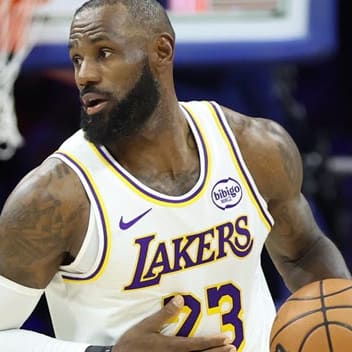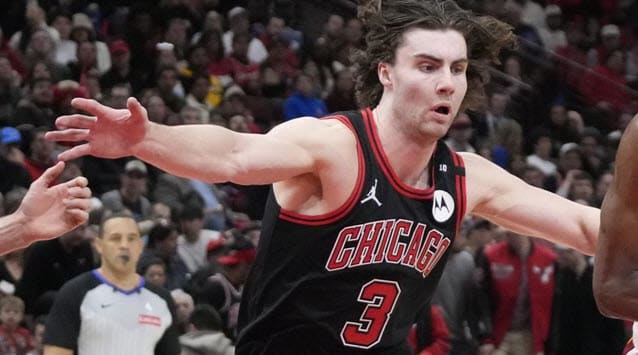Most NBA superstars are rightfully valued as early-round picks in the fantasy realm, but it's much more difficult to ascertain the worth of complementary players. For a multitude of reasons, a player's fantasy utility can often outstrip his value in real-life terms, forcing newcomers to the fantasy world to recalibrate their perceptions.
As a result, it renders useful, high-minute regulars -- like the Pelicans' Tony Allen or the 76ers' J.J. Redick, to name two examples -- significantly less-appealing in fantasy due to the lack of dimensionality in their skill sets.
Here are some players that fall on the opposite end of the spectrum and provide more value from a fantasy perspective than their notoriety might suggest:
Trevor Ariza, F, Rockets
With scoring averages below 15 points per game in all 13 of his NBA seasons, Ariza has never been more than a supporting player, and that's unlikely to change as he enters his age-32 campaign. However, it's Ariza's modest reputation that makes him someone easy to overlook in fantasy, where his two-way skill set lends to across-the-board production that often flies under the radar.
In each of his three seasons with the Rockets, Ariza has averaged at least 11.7 points, 4.5 rebounds, 2.3 three-pointers and 1.8 steals per game. The latter two areas are where he really supplies most of his value, as there aren't many 3-point specialists in the league who also offer that kind of impact in any defensive category. The arrival of Chris Paul in
Most NBA superstars are rightfully valued as early-round picks in the fantasy realm, but it's much more difficult to ascertain the worth of complementary players. For a multitude of reasons, a player's fantasy utility can often outstrip his value in real-life terms, forcing newcomers to the fantasy world to recalibrate their perceptions.
As a result, it renders useful, high-minute regulars -- like the Pelicans' Tony Allen or the 76ers' J.J. Redick, to name two examples -- significantly less-appealing in fantasy due to the lack of dimensionality in their skill sets.
Here are some players that fall on the opposite end of the spectrum and provide more value from a fantasy perspective than their notoriety might suggest:
Trevor Ariza, F, Rockets
With scoring averages below 15 points per game in all 13 of his NBA seasons, Ariza has never been more than a supporting player, and that's unlikely to change as he enters his age-32 campaign. However, it's Ariza's modest reputation that makes him someone easy to overlook in fantasy, where his two-way skill set lends to across-the-board production that often flies under the radar.
In each of his three seasons with the Rockets, Ariza has averaged at least 11.7 points, 4.5 rebounds, 2.3 three-pointers and 1.8 steals per game. The latter two areas are where he really supplies most of his value, as there aren't many 3-point specialists in the league who also offer that kind of impact in any defensive category. The arrival of Chris Paul in Houston should only help create more open looks from the outside for Ariza, making him a viable selection in the middle rounds of most drafts.
Enes Kanter, C, Knicks
Kanter, the inspiration for this exercise, has been a stellar per-minute scorer and rebounder throughout his career, but poor defense and the absence of a perimeter game have left him in a backup role for most of his six NBA seasons. That said, Kanter has almost always been a must-play option in DFS when he's received the opportunity to start, averaging 15.4 points and 9.0 rebounds per game in those scenarios.
Even while coming off the bench, Kanter still routinely outperformed former Thunder teammate and starting center Steven Adams from a fantasy standpoint, and the Turkish big man should remain on the radar after being traded to the Knicks in September. Though he'll be forced to compete with Willy Hernangomez -- and perhaps even Joakim Noah -- for starting duties, Kanter will probably be in store for a larger minutes share than he enjoyed in Oklahoma City, which might translate to a new career high in double-double production.
Bobby Portis, F, Bulls
Portis is a younger, less productive version of Kanter, but he might end up having a higher long-term ceiling in fantasy thanks to his flirtation with the 3-point line. Outside shooting isn't a strength of Portis' game at this time, but his scoring and rebounding will make him worth tracking in the event coach Fred Hoiberg is willing to overlook the third-year forward's shortcomings on the defensive end.
Portis will have to battle Nikola Mirotic and first-round pick Lauri Markkanen for playing time this season, and while the latter two are more accomplished perimeter snipers, neither has proven to be a consistent performer in that regard. That may be enough for Portis to stay above 20 minutes per game, in which case he'd likely warrant ownership in most deeper settings.
Robert Covington, F, 76ers
Perhaps due to his place on a lowly 76ers roster the last three seasons, Covington, like Ariza, is another 3-and-D wing who's often undervalued in fantasy. Over his last three seasons, Covington has averaged 13.0 points, 5.7 rebounds, 2.3 three-pointers and 1.6 steals, making him one of the more well-rounded producers at his position. Covington could see his minutes tail off a bit in 2017-18 with the 76ers having a wealth of interesting wing options on hand, but he'll begin the season as the starting small forward and should still maintain a large enough role to fill up multiple categories.
Lou Williams, G, Clippers
Williams has bounced around between six teams in his NBA career, but throughout his multiple stops, there's been one constant: the offense runs through him when he's on the floor. While splitting time between the Lakers and Rockets last season, Williams' 28.9 percent usage rate surpassed that of luminaries such as Giannis Antetokounmpo, Karl-Anthony Towns, Jimmy Butler and Kevin Durant.
Though Williams isn't an asset on the defensive end and will probably be confined to a sub-30-minute reserve role with the Clippers because of that, his ball-dominant ways will yield plenty of scoring, 3-point and free-throw production. The latter category might be where Williams makes his most significant impact, as the 5.0 free-throw attempts per game he hit in 2016-17 -- which he converted at an 88 percent clip -- placed him among the league's top 20.
J.J. Barea, G, Mavericks
At just six feet tall, Barea has natural limitations on the defensive end, which has resulted in him coming off the bench for nearly 90 percent of his career games. The second-unit role has suited him well, with Barea's improvement as a three-point shooter and distributor in particular the last two seasons allowing him to routinely earn 20-plus minutes even as he approaches his mid-30s. Barea has hit 37.5 percent of his 3-point tries to keep his scoring average in double figures the last two seasons and his 9.0 assists per 36 minutes in 2016-17 placed him eighth in the NBA.
With Dennis Smith representing the Mavs' point guard of the present and future, Barea is unlikely to see his playing time pick up this season when the team is at full health, but the veteran brings plenty to the table in DFS or as a short-term pickup in season-long leagues if one or two of Smith, Seth Curry and Yogi Ferrell are sitting out.
Boban Marjanovic, C, Pistons
It's easy for most observers to get distracted by Marjanovic's massive frame (7-foot-3 and 290 pounds) at the expense of his play, especially with most of his NBA minutes to date coming in garbage time. However, the numbers he's posted in small sample sizes have been undeniably impressive, with the Serbian center averaging 23.5 points, 16.0 rebounds and 1.5 blocks per 36 minutes in 2016-17, his first campaign with the Pistons.
With Aron Baynes bolting for the Celtics this summer, Marjanovic will now have a clear path to the backup job behind starter Andre Drummond. Baynes' role yielded him just 15.5 minutes per game last season, but Marjanovic's numbers would still prorate to a useful 10.1 points and 6.8 boards over that swath of time. Drummond has proven quite durable over his career, but with his performance regressing a season ago and his free-throw shooting remaining an eyesore, it's not difficult to envision Marjanovic, a career 77.9 percent shooter from the charity stripe, assuming a larger role than Baynes did.







































